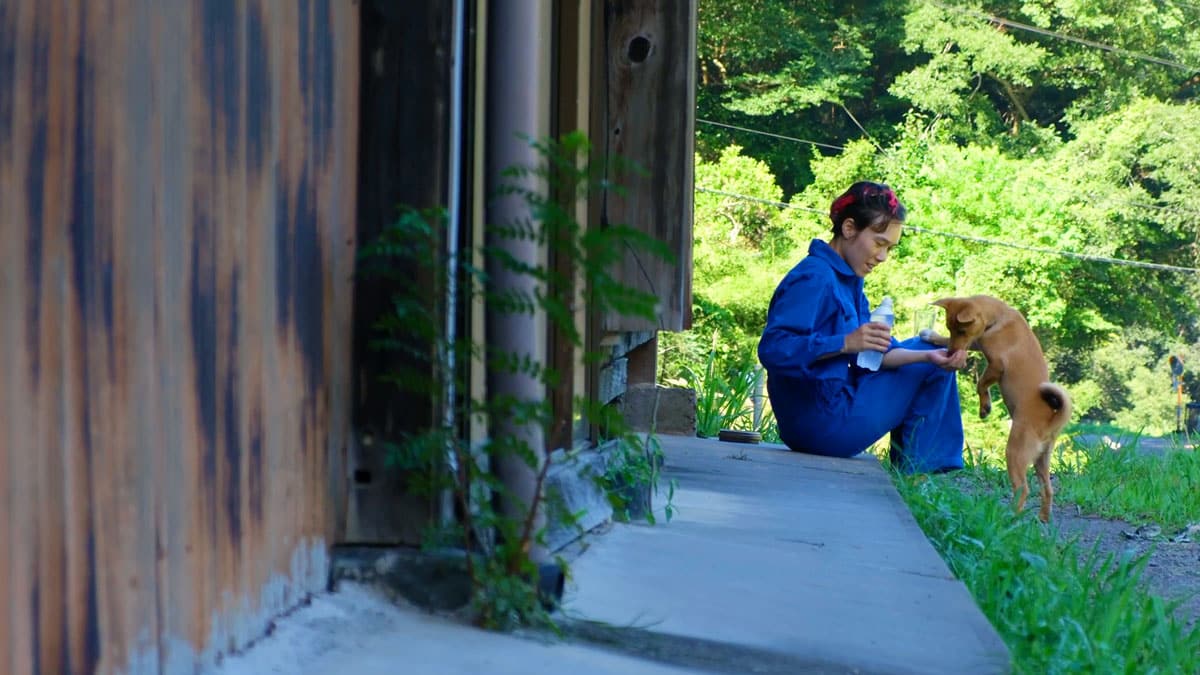Welcome back to another glimpse into our countryside life in Japan! Although we are already in the chill of December, it feels like only a few days ago that we were swimming in our local river to find relief from the summer heat. Japan’s summer temperatures can be quite intense, especially in the southern part of Japan, with temperatures often reaching over 30 degrees Celsius (86 degrees Fahrenheit) and high humidity levels that can make it feel even hotter and more uncomfortable.
The heat can be particularly challenging for those not used to it (especially us Canadians). But each year, we find ways to adapt and learn to deal with the summer heat better than in previous years. Here’s how we have adapted to living in the Japanese countryside in the summer heat.
We eat a lot of Japanese summer treats like cold noodles
During the hot summer months in Japan, chilled noodle dishes like nagashi somen and hiyashi udon are very popular. Recently, during one of our monthly neighborhood gatherings, we tried nagashi somen, a cold noodle dish made from wheat flour and served with a dipping sauce.
To eat nagashi somen, diners must use chopsticks to catch the noodles as they come down the noodle slide. If you can catch these slippery noodles, dip them into a bowl of lightly brothed soy sauce dipping sauce and practice the Japanese slurp. It involves scooping noodles as they sail down bamboo slides before they slip through your chopsticks. You only get to eat what you catch, so practicing your chopstick skills is a good idea if you don’t want to leave hungry.
Honestly, while I enjoy a nagashi somen or two, I prefer its distant cousin: hiyashi udon. I love the hot steaming bowl of these thick udon wheat noodles, and this chilled variation in a bowl with just soy sauce and toppings is another way to enjoy udon in the summer heat.
Making hiyashi udon
On yet another monthly neighbourhood gathering, the neighbours brought the toppings, with a few very specific recommendations from them — tenkasu (the scraps produced when frying tempura), deep-fried tofu, seaweed nori, canned mackerel, and a few other basic ingredients.
- Tenkasu (crunchy bits left over from frying tempura)
- deep-fried tofu
- shredded nori (seaweed)
- canned mackerel
- Soy sauce
- Mirin
- Udon noodles
To make the canned mackerel, I used a few Japanese staples like soy sauce and mirin to prepare the sauce. I heated the sauce on the stove at low heat.
Bring water to a boil and add udon noodles. Follow the instructions on your udon package, but whenever I purchase dry udon, I slightly undercook them— I prefer my noodles to be a little al dente, but that is up to your preference. Once cooked, drain and chill them under cold water.
To complete the dish, layer your ingredients and add a little drizzle of soy sauce. It’s a salty yet refreshing dish, perfect for summer and surprisingly easy to make!
Tightened your mold defense against Japan’s humid summer
During summertime, the heat can be challenging, but there’s another problem to overcome: mold. High humidity levels during summer can create a breeding ground for mold, which thrives in damp and warm environments, making it a common issue during these months. Mold can grow on anything, including leather shoes, bags, baskets, and knife handles. Recently, I found a purse that had been stored away and had developed its own world of mold!
To prevent mold growth, it’s essential to control humidity levels by using dehumidifiers, ensuring proper ventilation, and fixing any leaks or water damage promptly. Even with the summer heat, we can occasionally open windows and use exhaust fans in bathrooms and kitchens to ventilate the house and bathroom.
If you live anywhere with a similar climate, you know an indoor laundry system and a dehumidifier are absolute musts. On overcast, humid days when the sun isn’t out to dry our clothes, a good investment in a dehumidifier comes in handy.
Buy a Dryer Rack
Dryer racks are a common sight in Japanese hardware and furniture stores, available in both free-standing and wall-mounted versions. While living in a Japanese apartment, we opted for a free-standing version. But what we really wanted was a wall-mounted hanger for its easy-to-dismantle setup.
Invest in a Dehumidifier
During the summer heat, a dehumidifier can be a lifesaver. In fact, it’s not uncommon for households to have more than one dehumidifier in their homes. Dehumidifiers come in different sizes, largely depending on the size of the water tank. We have a three-litre tank. On especially humid days, we can find ourselves emptying that tank three times a day. Another reason to get one…
Wear light-colored, loose-fitting clothing made of breathable fabrics
I was a strictly non–dress person, that was, until I arrived in Japan. Now, I’m all about loose-fitting dresses that let the airflow around my body, preventing sweat from sticking to my skin.
Breathable fabrics like cotton and linen are also great choices because they absorb moisture and dry quickly, which is perfect, especially when traveling. I can’t count the number of laundry mishaps when staying at hotels without proper dryers.
As we say goodbye to summer, we’re excited for the cooler weather and the challenges that come with it, like gathering firewood for our bath and keeping our house cozy. We’ve had some great experiences this past autumn, and we can’t wait to share them with you as we explore country life in Japan. But for now, let’s celebrate overcoming another summer! Do you have any tips for beating the heat in Japan during summer? We’d love to hear them, so please leave a comment below!




